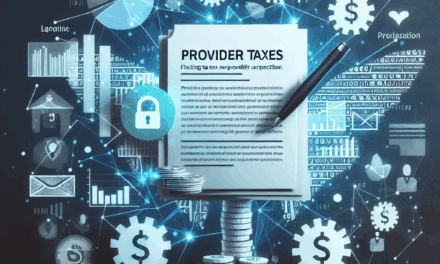GLP-1 Medications Driving Increased Expenditure on Conventional Pharmaceuticals, According to Evernorth Research
In recent years, the landscape of diabetes management has been significantly altered by the introduction of GLP-1 receptor agonists (GLP-1 RAs). These medications, which include popular drugs like semaglutide and liraglutide, have gained attention not only for their efficacy in managing blood sugar levels but also for their weight loss benefits. However, as highlighted by Evernorth Research, the rise of GLP-1 medications is also driving increased expenditure on conventional pharmaceuticals. This article delves into the implications of this trend, exploring the mechanisms behind GLP-1 medications, their impact on healthcare costs, and the broader implications for the pharmaceutical industry and patient care.
Understanding GLP-1 Medications
GLP-1 medications are a class of drugs that mimic the action of the glucagon-like peptide-1 hormone, which plays a crucial role in glucose metabolism. These medications are primarily used to treat type 2 diabetes but have also been found to aid in weight management, making them attractive options for patients with obesity-related comorbidities.
- Mechanism of Action: GLP-1 RAs enhance insulin secretion in response to meals, inhibit glucagon release, and slow gastric emptying. This multifaceted approach helps to lower blood glucose levels effectively.
- Weight Loss Benefits: Many patients experience significant weight loss while on GLP-1 medications, which is a critical factor in managing type 2 diabetes and reducing the risk of cardiovascular diseases.
- Administration: These medications are typically administered via subcutaneous injection, with some newer formulations available in oral form, increasing accessibility for patients.
- Market Growth: The GLP-1 medication market has seen exponential growth, with sales reaching billions of dollars annually, driven by increasing diabetes prevalence and obesity rates.
- Clinical Evidence: Numerous clinical trials have demonstrated the efficacy and safety of GLP-1 medications, leading to their endorsement by major diabetes associations worldwide.
The rise of GLP-1 medications has not only transformed diabetes management but has also raised questions about their economic impact on the healthcare system. As these drugs become more widely prescribed, understanding their financial implications is crucial for stakeholders across the board.
The Economic Impact of GLP-1 Medications
The introduction of GLP-1 medications has led to a paradigm shift in diabetes treatment, but it has also resulted in increased healthcare expenditures. According to Evernorth Research, the financial implications of these medications are profound, affecting both patients and the healthcare system as a whole.
- Increased Drug Costs: GLP-1 medications are often more expensive than traditional diabetes treatments, leading to higher out-of-pocket costs for patients and increased insurance premiums.
- Cost-Effectiveness Analysis: While GLP-1 medications may have higher upfront costs, studies suggest they can be cost-effective in the long run due to their ability to reduce complications associated with diabetes.
- Impact on Conventional Pharmaceuticals: The rise of GLP-1 medications has led to a decline in the use of conventional diabetes medications, which may affect their market viability and pricing.
- Healthcare Utilization: Patients on GLP-1 medications may experience fewer hospitalizations and complications, potentially offsetting some of the increased drug costs.
- Insurance Coverage: The growing popularity of GLP-1 medications has prompted insurers to reevaluate their coverage policies, impacting patient access and affordability.
As healthcare costs continue to rise, understanding the economic impact of GLP-1 medications is essential for policymakers, healthcare providers, and patients alike. The balance between cost and clinical benefit will play a critical role in shaping future treatment paradigms.
Case Studies: Real-World Implications of GLP-1 Medications
To better understand the implications of GLP-1 medications on healthcare expenditure, it is essential to examine real-world case studies that illustrate their impact on patient outcomes and costs.
- Case Study 1: A Patient’s Journey – Consider the case of a 55-year-old male with type 2 diabetes who transitioned from metformin to semaglutide. Initially, his monthly medication costs increased significantly, but over time, he experienced substantial weight loss and improved glycemic control, leading to reduced healthcare visits and lower overall costs.
- Case Study 2: A Healthcare System Perspective – A large healthcare system implemented a GLP-1 medication program for its diabetic patients. While the initial costs were higher, the system reported a decrease in diabetes-related complications and hospitalizations, ultimately saving money in the long run.
- Case Study 3: Insurance Coverage Changes – An insurance company analyzed the cost-effectiveness of covering GLP-1 medications for its members. The study found that while upfront costs were higher, the long-term savings from reduced complications justified the coverage expansion.
- Case Study 4: Patient Adherence and Outcomes – A study examining patient adherence to GLP-1 medications found that those who remained on therapy experienced better health outcomes, including lower HbA1c levels and reduced weight, leading to decreased healthcare utilization.
- Case Study 5: Economic Modeling – Researchers conducted an economic modeling study comparing GLP-1 medications to traditional therapies. The results indicated that GLP-1 medications could be more cost-effective when considering long-term health outcomes and quality of life improvements.
These case studies highlight the complex interplay between medication costs, patient outcomes, and healthcare expenditures. They underscore the importance of considering both short-term and long-term implications when evaluating the economic impact of GLP-1 medications.
Shifting Paradigms in Diabetes Management
The rise of GLP-1 medications is indicative of a broader shift in diabetes management paradigms. As healthcare providers and patients increasingly recognize the importance of comprehensive diabetes care, several key trends are emerging.
- Holistic Approaches: There is a growing emphasis on treating diabetes as a multifaceted condition that requires a holistic approach, including lifestyle modifications, medication management, and regular monitoring.
- Patient-Centered Care: The focus is shifting towards patient-centered care, where treatment plans are tailored to individual needs, preferences, and goals, enhancing patient engagement and adherence.
- Integration of Technology: The use of technology, such as continuous glucose monitors and telehealth services, is becoming more prevalent, allowing for real-time data tracking and more personalized treatment adjustments.
- Collaboration Among Providers: Interdisciplinary collaboration among healthcare providers, including endocrinologists, dietitians, and mental health professionals, is essential for comprehensive diabetes management.
- Emphasis on Prevention: There is a renewed focus on preventing type 2 diabetes through early intervention and lifestyle changes, which can reduce the need for more expensive treatments later on.
These shifting paradigms reflect a growing recognition of the complexities of diabetes management and the need for innovative approaches to improve patient outcomes while managing costs effectively.
The Future of GLP-1 Medications and Healthcare Expenditure
As GLP-1 medications continue to gain traction in diabetes management, their future implications for healthcare expenditure warrant careful consideration. Several factors will shape the trajectory of these medications and their economic impact.
- Research and Development: Ongoing research into new formulations and delivery methods for GLP-1 medications may lead to more cost-effective options, potentially reducing overall healthcare expenditures.
- Market Competition: As more companies enter the GLP-1 market, increased competition may drive down prices, making these medications more accessible to patients.
- Policy Changes: Legislative and policy changes regarding drug pricing and insurance coverage will play a significant role in determining patient access to GLP-1 medications.
- Patient Education: Educating patients about the benefits and costs associated with GLP-1 medications will be crucial for informed decision-making and adherence to treatment plans.
- Long-Term Outcomes Research: Continued research into the long-term outcomes of GLP-1 medications will provide valuable insights into their cost-effectiveness and overall impact on healthcare systems.
The future of GLP-1 medications is promising, but it will require collaboration among stakeholders, including pharmaceutical companies, healthcare providers, insurers, and patients, to ensure that these medications are both effective and affordable.
Conclusion
The rise of GLP-1 medications represents a significant advancement in diabetes management, offering patients effective tools for controlling blood sugar levels and achieving weight loss. However, as highlighted by Evernorth Research, this trend is also driving increased expenditure on conventional pharmaceuticals, raising important questions about the economic implications for patients and the healthcare system.
Understanding the mechanisms behind GLP-1 medications, their economic impact, and the shifting paradigms in diabetes management is essential for stakeholders across the healthcare spectrum. As we look to the future, it is crucial to balance the benefits of these innovative treatments with considerations of cost and accessibility, ensuring that all patients can benefit from advancements in diabetes care.
In summary, the landscape of diabetes management is evolving, and the implications of GLP-1 medications will continue to shape healthcare expenditures and patient outcomes. By fostering collaboration and innovation, we can navigate the complexities of this new era in diabetes care, ultimately improving the lives of millions affected by this chronic condition.





